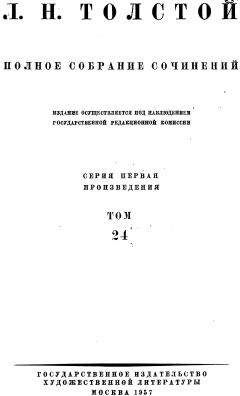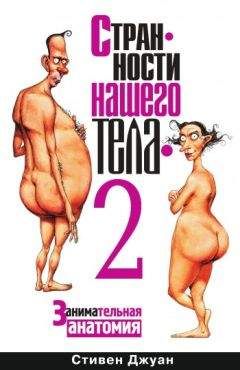600
Drs M. S. Vos and J. C. de Haes are from the Department of Psychiatry at the Bronovo Hospital in The Hague, The Netherlands.
M. Vos and J. Haes, ‘Denial in cancer patients, an explorative review’, Psycho-Oncology, 2007. vol. 16, no. 1, pp. 12–25, Epub 25 July 2006.
S. Juan, ‘Why are people so often in denial?’, The Register, 29 September 2006.
Dr Marcelo Suarez-Orozco is from the Department of Anthropology at the University of California at San Diego.
Dr G.C. Gauchard, J. Muir, C. Touron, L. Benamghar, D. Dehaene, P. Perrin and N. Chau are from the WHO Collaborative Centre in the Faculty of Medicine at the Henri Poincare University in Nancy, France.
Professor Ivan Robertson and colleagues are from the Institute of Science and Technology at the University of Manchester, UK.
C. Martin, ‘He spent life picking himself up’, The Denver Post, 23 September 2006.
S. Juan, ‘What type of person is accident-prone?’, The Register, 20 October 2006.
Dr Dale Larson is from Santa Clara University and Dr R.L. Chastain is from Samuel Merritt College in Oakland, California.
D. Larson and R. Chastain, ‘Self-concealment: Conceptualisation, measurement, and health implications’, Journal of Social and Clinical Psychology, 1990, vol. 9, pp. 439–455.
Dr J. W. Pennebaker is from the Department of Psychology at the University of Texas in Austin.
J. Pennebaker, Opening Up: The Healing Power of Expression Emotion, Guilford, New York, 1997.
Drs C. E. Hill. C. Gelso and J. Mohr are from the University of Maryland at College Park.
C. Hill et al., ‘Client concealment and self-presentation in therapy: Comment on Kelly (2000)’, Psychological Bulletin, 2000, vol. 126, pp. 495–500.
Drs Anita Kelly and Jonathan Yip are from the Department of Psychology at the University of Notre Dame in South Bend, Indiana.
A. Kelly and J. Yip, ‘Is keeping a secret or being a secretive person linked to psychological symptoms?’, Journal of Personality, 2006, vol. 74, no. 4, pp. 1349–1370.
Dr Marie Hartwell-Walker is clinical director of the Adult Outpatient Services Program of the Community Mental Health Centre of Western Massachusetts in Springfi eld.
R. Campbell, Campbell’s Psychiatric Dictionary, Oxford University Press, New York, 2004, pp. 328, 497.
S. Juan, ‘Which comes first: Imagination or fantasy?’, The Register, 19 May 2006.
T. Cassidy, ‘3—ear-old girl has died 35 times!’, Weekly World News, 4 August 1998, p. 24.
Dr J.B. Stephenson is from the Royal Hospital for Sick Children in Glasgow, Scotland.
J. Stephenson, ‘Refl ex anoxic seizures (“while breath holding”): Nonepileptic vagal attacks’, Archives of Disease in Children, 1978, vol. 53, no. 3, pp. 193–200.
I. Horrocks, A. Nechav, J. Stephenson and S. Zuberi, ‘Anoxic-epileptic seizures: Observational study of epileptic seizures induced by syncopes’, Archives of Disease in Children, 2005, vol. 90, no. 12, pp. 1283–1287.
J. Varasdi, Myth Information, p. 122.
S. Juan, ‘Is long life related to where you live?’, The Register, 6 June 2006.
S. Juan, ‘It would be a lie to say that it’s a lie-detector’, National Post, 6 November 2006, pp. 1–2.
Dr Steven Stack is a psychologist at Wayne State University in Detroit.
S. Stack, ‘Opera subculture and suicide for honor’, Death Studies, 2002, vol. 26, no. 6, pp. 431–437.
J. Holoubek and E. Holoubek, ‘Execution by crucifixion. History, methods and cause of death’, Journal of Medicine, 1995, vol. 26, nos. 1–2, pp. 1—16.
Drs F.R Retief and L. Cilliers are from the University of the Free State in Bloemfontein, South Africa.
F. Retief and L. Cilliers, ‘The history and pathology of crucifi xion’, South African Medical Journal, 2003, vol. 93, no. 12, pp. 938–941.
Dr Raymond Fish is from the University of Illinois in Champaign and Dr Leslie Geddes is from Purdue University in West Lafayette, Indiana.
R. Fish and L. Geddes, ‘Eff ects of stun guns and tasers’, The Lancet, 2001, vol. 358 (9283), pp. 687–688.
Dr William P. Bozeman is from the Department of Emergency Medicine at the School of Medicine at Wake Forest University in Winston-Salem, North Carolina.
W. Bozeman, ‘Withdrawal of taser electroshock devices: Too many, too soon’, Annals of Emergency Medicine, 2005, vol. 46, no. 3, pp. 300–301.
J. Strote and H. Range Hutson, ‘Taser use in restraint-related deaths’, Prehospital Emergency Care, 2006, vol. 10, no. 4, pp. 447–450.
D. Lakkireddy, D. Wallick, K. Ryschon, M. Chung, J. Butany, D. Martin, W. Saliba, W. Kowalewski, A. Natalie and P. Tchou, ‘Effects of cocaine intoxication on the threshold for stun gun induction of ventricular fi brillation’, Journal of the American College of Cardiology, 2006, vol. 48, no. 4, pp. 805–811.
E. Jenkinson, C. Neeson and A. Bleetman, ‘The relative risks of police use-of-force options: Evaluating the potential for deployment of electronic weaponry’, Journal of Clinical Forensic Medicine, 2006, vol. 13, no. 5, pp. 229–241.
S. Juan, ‘Can stun guns and tasers cause death?’, The Register, 13 October 2006.
Drs S. Izumi, A. Suyama and K. Koyama are from the Radiation Eff ects Research Foundation in Hiroshima.
S. Izumi et al., Radiation-related mortality among offspring of atomic bomb survivors: A half-century of followup’, International Journal of Cancer, 2003, vol. 107, no. 2, pp. 292–297.
Drs C. Hansen and C. Schriner are from the Department of Veterans Aff airs in St Louis.
D. Hansen and C. Schriner, ‘Unanswered questions: The legacy of atomic veterans’, Health Physics, 2005, vol. 89, no. 2, pp. 153–163.
S. Juan, ‘Survivors’ kids have normal lifespan’, National Post, 8 May 2006, p. 1.
Dr Troy Case is from the Department of Anthropology at North Carolina State University in Raleigh.
J. Varasdi, Myth Information, pp. 212–213.
T. Case, An analysis of scalping cases and treatment of the victims’ corpses in prehistoric North America’, unpublished paper, 2006.
S. Juan, ‘What was wrong with the “bubble boy”?’, The Register, 15 May 2006.
K. Creed, ‘Doctors study mysterious “Burping Corpse” in LA, Weekly World News, 12 May 1998, p. 11.
S. Juan, ‘Can a corpse burp?’, The Register, 30 June 2006.
Dr David Lester is a professor of psychology at the Richard Stockton College in Pomona, New Jersey.
D. Lester, ‘Personal violence (suicide and homicide), traffic fatalities and alcohol consumption’, Psychological Reports, 1988, vol. 62, no. 2, p. 433.
Drs T. J. Scanlon, R. Luben, F. Scanlon and N. Singleton are from the Department of Public Health at the Mid Downs Health Authority in West Sussex, UK.
T. Scanlon et al., ‘Is Friday the 13th bad for your health?’, British Medical Journal, 1993, vol. 307 (6919), pp. 1584–1586.
Dr Simo Nayha is from the Department of Public Health Science and General Practice at the University of Oulu in Finland.
S. Nayha, ‘Traffi c deaths and superstition on Friday the 13th’, American Journal of Psychiatry, 2002, vol. 159, no. 12, pp. 2110–2111.
Dr Donald Smith is a psychiatrist from Risskov, Denmark.
D. Smith, ‘Traffi c accidents and Friday the 13th’, American Journal of Psychiatry, 2004, vol. 161, no. 11, p. 2140.
Drs I. Radun and H. Summala are from the Traffi c Research Unit of the Department of Psychology at the University of Helsinki, Finland.
I. Radun and H. Summala, ‘Females do not have more injury road accidents on Friday the 13th’, BMC Public Health, 2004, vol. 4, p. 54.
Drs V. V. Kumar, N. V. Kumar and G. Isaacson are from the Department of Otolaryngology at the School of Medicine at Temple University in Philadelphia.
V. Kumar et al., ‘Superstition and post-tonsillectomy hemorrhage’, Laryngoscope, 2004, vol. 114, no. 11, pp. 2031–2033.
S. Juan, ‘Is Friday the 13th bad for your health?’, The Register, 7 July 2006.
S. Juan, ‘No ill fortune on Friday the 13th’, National Post, 16 October 2006, pp. 1–3.
Dr K. Eto is from the Japanese Ministry of the Environment and the National Institute for Minamata Disease in Minamata.
K. Eto, ‘Minamata disease: A neuropathological viewpoint’, Seishin Shinkeigaku Zasshi, 2006, vol. 108, no. 1, pp. 10–23.
S. Juan, The Minamata disaster – 50 years on’, The Register, 14 July 2006.
Personal communication, 6 July 2006.
S. Juan, ‘Can you die from testing a 9V battery on your tongue?’, The Register, 28 July 2006.
Centres for Disease Control and Prevention, Diphtheria, Atlanta, Georgia, 2 August 2006.
S. Juan, ‘What is diphtheria?’, The Register, 25 August 2006.
S. Juan, ‘What is the diff erence between a virus and a bacterium?’, The Register, 29 September 2006.
L. Kund van der Post, ‘Dive, dive, dive’, New Scientist, 5 October 1996, p. 65.
M. Gregorie, R. Clifton, M. Morton, K. Bastien and A. Bowyer, ‘Free-falling’, New Scientist, 29 July 2006, p. 65.
S. Juan, ‘From what height can you survive a dive into water?’, The Register, 20 October 2006.
Dr T. Bernstein is from the Wallace-Kettering Neuroscience Institute at Wright State University in Dayton, Ohio.
Dr T. Bernstein is from the Wallace-Kettering Neuroscience Institute at Wright State University in Dayton, Ohio.
L. Zynda and K. Skiba, ‘Fracture of both humeral bones after electrocution’, Chirurgia Narzadow Ruchu I Ortopedia Polska, 1991, vol. 56, nos. 1–3, pp. 64–65.
N. Friswell, M. Follows and M. Brown, ‘When people die of electric shocks, what kills them – current or voltage?’, New Scientist, 22 April 2006, p. 65.
S. Juan, ‘What happens when you are executed by electrocution?’, The Register, 20 October 2006.
Office of the Coordinator for Counterterrorism, Country Reports on Terrorism, US Department of State, Washington, DC, 28 April 2006.
Dr HA. Sampson is from the Elliot and Roslyn Jaffe Food Allergy Institute at the Mount Sinai School of Medicine in New York.
H. Sampson, Anaphylaxis and emergency treatment’, Pediatrics, 2003, vol. Ill, no. 6, pt. 3, pp. 1601–1608.
World Health Organization (WHO), The World Health Report 2002 – Reducing Risks, Promoting Healthy Life, WHO, Geneva, 2002, p. 82.
S. Juan, ‘What if you are hit by lightning’, National Post, 8 May 2007, pp. 1–2.




